Baden-Württemberg
state, Germany

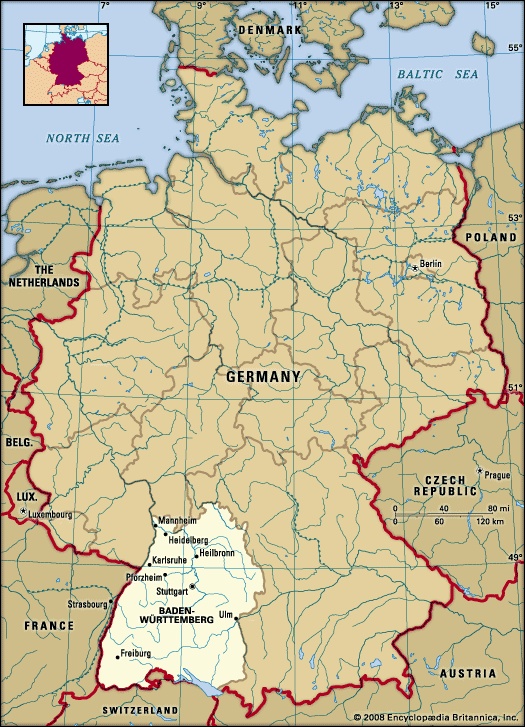 Land (state) in southwestern Germany. Baden-Württemberg is bordered by the states of Rhineland-Palatinate to the northwest, Hessen to the north, and Bavaria to the east and by the countries of Switzerland to the south and France to the west. The state's capital is Stuttgart. Area 13,804 square miles (35,752 square km). Pop. (2006 est.) 10,738,753.
Land (state) in southwestern Germany. Baden-Württemberg is bordered by the states of Rhineland-Palatinate to the northwest, Hessen to the north, and Bavaria to the east and by the countries of Switzerland to the south and France to the west. The state's capital is Stuttgart. Area 13,804 square miles (35,752 square km). Pop. (2006 est.) 10,738,753.Formed under post-World War II occupational rule and confirmed by referendum in December 1951, Baden-Württemberg consists of three former states: Württemberg-Baden (in the American zone) and Südwürttemberg-Hohenzollern and Südbaden (both in the French zone). The merger of these states took effect in 1952.
Baden-Württemberg is one of Germany's most geographically varied states, with the forests of the upland regions alternating with fertile highlands, green meadows, lakes, and marshes. Its geographical boundaries are the Main River to the north, the Iller River to the east, the waters of Lake Constance (Constance, Lake) (Bodensee) and the upper Rhine (Rhine River) to the south, and the widening Rhine Valley to the west. The source of the Danube River (Donau) is in Baden-Württemberg, at Donaueschingen (Danube River), and the river cuts through the eastern area of the state on the first part of its journey across the European continent. The Danube is the main drainage basin south of the European water divide, which bisects the state.
The fertile southern part of the upper Rhine Valley is an important agricultural region, with many orchards and vineyards, including the sun-drenched vineyards around Mount Kaiserstuhl, which produce wine that ranks among the finest of all wines produced in Germany.
Baden-Württemberg contains Germany's largest continuous forest area, the Black Forest (Schwarzwald), which spreads westward to the banks of the Rhine River. Idyllic valleys break its uniformity, and over the years low-lying portions have filled with water, with many small lakes now contributing to the forest's enchanting, if somewhat foreboding, scenery. The highest point is the Feldberg, which rises to 4,898 feet (1,493 metres). The Black Forest edges into the Hotzen Forest (Hotzenwald) in the south, where many lakes and reservoirs feed numerous power stations. Fruit is grown in valleys cutting into the western escarpment, most commonly grapes, plums, and cherries used in kirsch, the famous Black Forest cherry brandy.
 The Alpine Foreland is a deep trough at the edge of the Alps stretching from the formerly volcanic area of the Hegau Mountains in the west to the meadows of the Allgäu in the east. Within its area lies the famous Lake Constance and numerous rolling hills with many lakes and marshes, which give the region a distinct appearance. The marshy ground is used for therapeutic baths, hence the number of health spas in this area.
The Alpine Foreland is a deep trough at the edge of the Alps stretching from the formerly volcanic area of the Hegau Mountains in the west to the meadows of the Allgäu in the east. Within its area lies the famous Lake Constance and numerous rolling hills with many lakes and marshes, which give the region a distinct appearance. The marshy ground is used for therapeutic baths, hence the number of health spas in this area. The Swabian Alp (Schwäbische Alb (Swabian Alp)) covers the area between the Black Forest and the Franconian Alp (Fränkische Alb). In the north its mountains fall abruptly into the valley of the Neckar River. The fertile Neckarland region is one of the most densely populated areas of Germany. There is a profusion of vineyards along the Neckar and its many tributaries. Other produce grown in the region includes potatoes, sugar beets, and a variety of fruits and vegetables, together with some grains. Since the end of World War II, new development has pushed city and town limits farther into rural districts.
The Swabian Alp (Schwäbische Alb (Swabian Alp)) covers the area between the Black Forest and the Franconian Alp (Fränkische Alb). In the north its mountains fall abruptly into the valley of the Neckar River. The fertile Neckarland region is one of the most densely populated areas of Germany. There is a profusion of vineyards along the Neckar and its many tributaries. Other produce grown in the region includes potatoes, sugar beets, and a variety of fruits and vegetables, together with some grains. Since the end of World War II, new development has pushed city and town limits farther into rural districts.The Hohenlohe district is the granary of Baden-Württemberg. It lies around the old free city of Schwäbisch Hall and extends all the way to the borders of Bavaria at Rothenburg ob der Tauber. Large farms and numerous, often well-preserved, castles provide ample evidence of the wealth of Hohenlohe in past centuries.
Located between the Rhine and Neckar rivers, the fertile Kraichgau district is the site of wheat, corn (maize), tobacco, and fruit farming. The Schwetzinger asparagus of this area is quite famous.
The Odenwald (Oden Forest) is often called the “Siberia of Baden” because of its location outside the main traffic arteries as well as its raw climate. Only in the years since 1950 has the development of small industry created extra income possibilities for the local small farmer.
The climate of Baden-Württemberg differs greatly among the various regions of the state. The upper Rhine Valley is the warmest area, with a yearly mean average in the high 40s °F (about 9 °C), whereas the Alps are the most inhospitable, with a mean average in the low 40s °F (about 5. 5 °C).
A characteristic feature of Baden-Württemberg is its great number of urban settlements; the urban density is two to three times that of northern Germany. By the late 20th century, Baden-Württemberg ranked third in both area and population among the German states, having grown more than any other in the period following World War II.
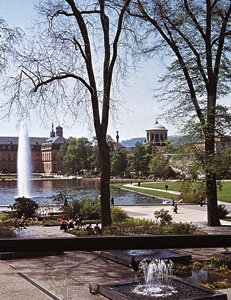 Baden-Württemberg's great post-World War II expansion owed much to the fact that almost a quarter of its population was composed of people who moved to the state as fugitives or displaced persons from the Soviet-occupied east. Their influx to this particular region is partially explained by ancestral links between them and the states of Baden and Württemberg in previous centuries. In addition, many simply saw opportunities for a new start in this part of Germany, which had been spared the brunt of wartime destruction. From 1945 to 1950, the rural areas of the state provided the best prospects for housing and employment, but the following years saw a return of the workforce to the industrial centres. The capital, Stuttgart, witnessed spectacular growth, and there was severe depopulation of many rural districts. By the late 20th century, apparently only the high rents in the cities kept even more people from moving to the urban areas in which they worked.
Baden-Württemberg's great post-World War II expansion owed much to the fact that almost a quarter of its population was composed of people who moved to the state as fugitives or displaced persons from the Soviet-occupied east. Their influx to this particular region is partially explained by ancestral links between them and the states of Baden and Württemberg in previous centuries. In addition, many simply saw opportunities for a new start in this part of Germany, which had been spared the brunt of wartime destruction. From 1945 to 1950, the rural areas of the state provided the best prospects for housing and employment, but the following years saw a return of the workforce to the industrial centres. The capital, Stuttgart, witnessed spectacular growth, and there was severe depopulation of many rural districts. By the late 20th century, apparently only the high rents in the cities kept even more people from moving to the urban areas in which they worked.Baden-Württemberg may be regarded as the one German state in which economic life is dominated by middle-class businesspeople and small farmers. Although such world-famous firms as Daimler AG started as small workshops in Stuttgart and Mannheim, there is virtually no heavy industry in the region. In general, Baden-Württemberg is a producer of high-value-added industrial products. It is the centre for specialized mechanical industries that produce the majority of all the clocks, watches, and custom-made jewelry that originate in the country. Substantial amounts of Germany's leather goods, musical instruments, medical instruments, food, agricultural produce, and hardware are also produced in Baden-Württemberg. However, the relative decline in the importance of manufacturing as an employer affected the state's economy during the 1990s, and Baden-Württemberg endeavoured to expand employment in high technology, manufacturing, and business services in order to maintain its traditionally high standard of living.
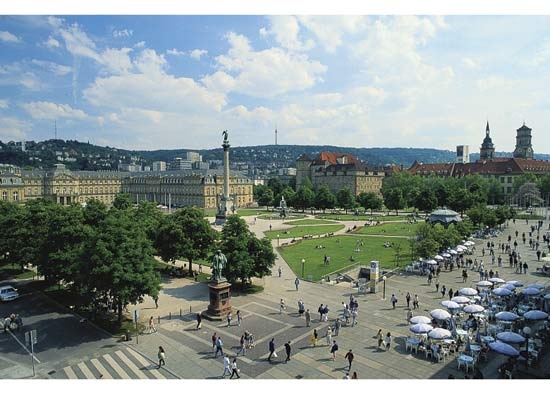 The industrial centres of the state are concentrated in the Neckar Valley, between Esslingen, Stuttgart, and Heilbronn, and this area accounts for more than half of the state's total production. Stuttgart has one of Germany's largest concentrations of high-technology businesses. Industrial areas are found on the banks of the Rhine near Mannheim and near Karlsruhe and Ulm. The border district of the upper Rhine also has gained in economic importance. Since it is situated near the French and Swiss borders, it has become the preferred site for new branch offices of German, as well as French and Swiss, companies.
The industrial centres of the state are concentrated in the Neckar Valley, between Esslingen, Stuttgart, and Heilbronn, and this area accounts for more than half of the state's total production. Stuttgart has one of Germany's largest concentrations of high-technology businesses. Industrial areas are found on the banks of the Rhine near Mannheim and near Karlsruhe and Ulm. The border district of the upper Rhine also has gained in economic importance. Since it is situated near the French and Swiss borders, it has become the preferred site for new branch offices of German, as well as French and Swiss, companies.Making a living in agriculture continues to pose problems for farmers with small holdings. Many supplement their farm income with factory jobs or by converting either their own homes or other nearby property to tourist use. The well-known spas of Baden-Baden, Wildbad, and Badenweiler provide additional tourist facilities, while many other smaller spas have been enlarged and improved considerably with financial help from the state government.
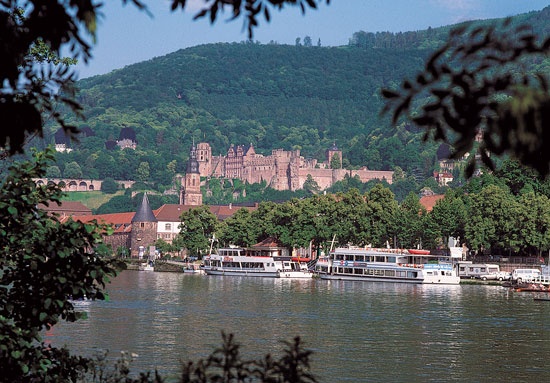 Lacking natural resources and forced to depend mainly on commerce and trade, Baden-Württemberg pays particular attention to its transportation system. As early as 1955 the government prepared a general plan that by the late 20th century had been twice improved and adapted to more-recent technological developments. The state has several autobahns and an extensive system of smaller highways, and it is well served by high-speed passenger rail service. The Rhine and Neckar have been improved as waterways. Baden-Württemberg has a major international airport near Stuttgart and many smaller airports.
Lacking natural resources and forced to depend mainly on commerce and trade, Baden-Württemberg pays particular attention to its transportation system. As early as 1955 the government prepared a general plan that by the late 20th century had been twice improved and adapted to more-recent technological developments. The state has several autobahns and an extensive system of smaller highways, and it is well served by high-speed passenger rail service. The Rhine and Neckar have been improved as waterways. Baden-Württemberg has a major international airport near Stuttgart and many smaller airports.Representatives to the Landtag (state parliament) are directly elected to five-year terms. The Landtag passes legislation, approves the state budget, and chooses the minister-president and members of the state constitutional court.
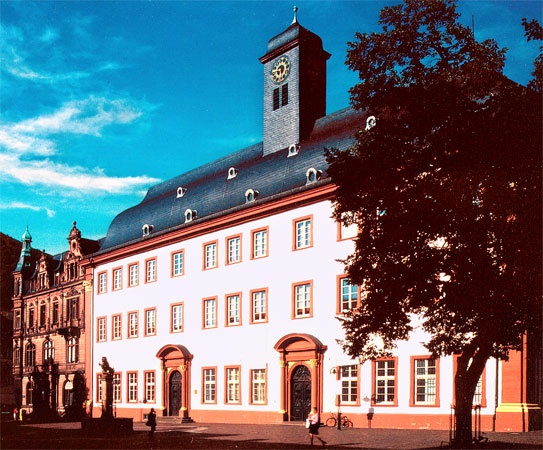 Baden-Württemberg is one of Germany's foremost centres of higher education. In addition to the Universities of Heidelberg (Heidelberg, University of) and Tübingen (Tübingen, University of) and the Albert Ludwig University of Freiburg (Freiburg, Albert Ludwig University of), all of which date from the Middle Ages, there are technical universities at Stuttgart and Karlsruhe, an agricultural university in Stuttgart-Hohenheim, and a university in Mannheim that specializes in economics. The University of Ulm and the University of Konstanz were both founded in the 1960s. There are also many other institutions of higher education.
Baden-Württemberg is one of Germany's foremost centres of higher education. In addition to the Universities of Heidelberg (Heidelberg, University of) and Tübingen (Tübingen, University of) and the Albert Ludwig University of Freiburg (Freiburg, Albert Ludwig University of), all of which date from the Middle Ages, there are technical universities at Stuttgart and Karlsruhe, an agricultural university in Stuttgart-Hohenheim, and a university in Mannheim that specializes in economics. The University of Ulm and the University of Konstanz were both founded in the 1960s. There are also many other institutions of higher education.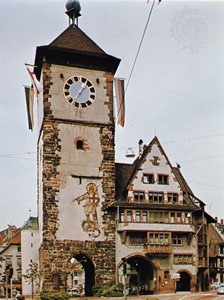 Baden-Württemberg has many architectural monuments. Gothic churches abound in Ulm and Freiburg im Breisgau. Baroque churches in Weingarten (Kreis Ravensburg), Birnau, Steinhausen, Zwiefalten, and Mannheim, together with the former Kaiserpfalz (Kaiser Palace) in Wimpfen and the castle of Rastatt, are popular tourist attractions. The castles of Schwetzingen and Bruchsal, reconstructed since World War II, complement the many castles around the cities of Karlsruhe and Mannheim. Baden-Württemberg also has a number of UNESCO World Heritage sites (World Heritage site), including part of the Frontiers of the Roman Empire: Upper German-Raetian Limes site, the Maulbronn Monastery Complex, dating to the 12th century, and the Monastic Island of Reichenau, on Lake Constance, which includes parts of a Benedictine monastery founded in 724 as well as several early medieval churches.
Baden-Württemberg has many architectural monuments. Gothic churches abound in Ulm and Freiburg im Breisgau. Baroque churches in Weingarten (Kreis Ravensburg), Birnau, Steinhausen, Zwiefalten, and Mannheim, together with the former Kaiserpfalz (Kaiser Palace) in Wimpfen and the castle of Rastatt, are popular tourist attractions. The castles of Schwetzingen and Bruchsal, reconstructed since World War II, complement the many castles around the cities of Karlsruhe and Mannheim. Baden-Württemberg also has a number of UNESCO World Heritage sites (World Heritage site), including part of the Frontiers of the Roman Empire: Upper German-Raetian Limes site, the Maulbronn Monastery Complex, dating to the 12th century, and the Monastic Island of Reichenau, on Lake Constance, which includes parts of a Benedictine monastery founded in 724 as well as several early medieval churches.The state theatres in Karlsruhe and Stuttgart have an international reputation, with the Stuttgart Ballet perhaps being the most notable troupe to perform at the Stuttgart theatre. Of the provincial and city theatres, the Mannheim National Theater merits special mention: Friedrich von Schiller (Schiller, Friedrich von)'s Die Räuber (The Robbers) had its world premiere on that stage. In addition to Schiller, famous natives of Baden-Württemberg include poets and writers such as Friedrich Hölderlin (Hölderlin, Friedrich) and Hermann Hesse (Hesse, Hermann), philosophers Georg Friedrich Wilhelm Hegel (Hegel, Georg Wilhelm Friedrich) and Martin Heidegger (Heidegger, Martin), and painter and engraver Otto Dix (Dix, Otto), who made an important contribution to German Expressionism.
- Pyay
- pycnidium
- Pycnodontiformes
- Pydna, Battle of
- Pye, Henry James
- pyelonephritis
- Pygmalion
- Pygmy
- pygmy grasshopper
- pygmy owl
- pygmy sand cricket
- Pyle, Ernie
- Pyle, Howard
- pylon
- pylorus
- Pylos
- Pym, Barbara
- Pym, John
- Pynchon, Thomas
- pyothorax
- Pyotr Aleksandrovich, Graf Zadunaysky Rumyantsev
- Pyotr Aleksandrovich Rumyantsev, Graf Zadunaysky
- Pyotr Andreyevich, Count Shuvalov
- Pyotr Andreyevich, Count Tolstoy
- Pyotr Andreyevich Shuvalov, Count